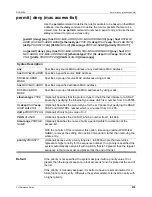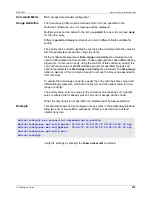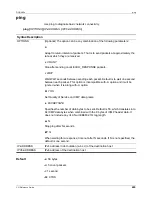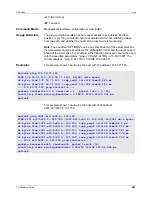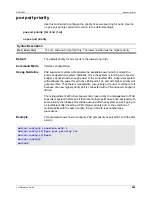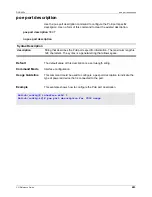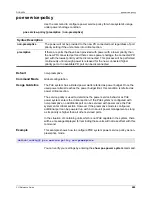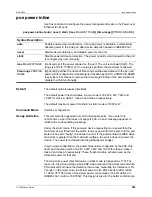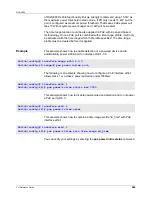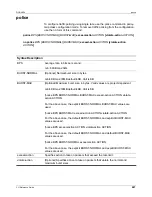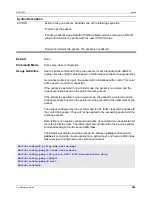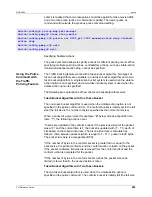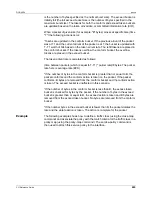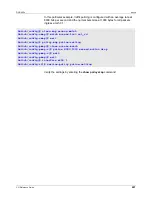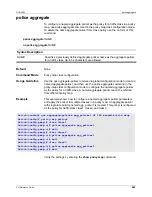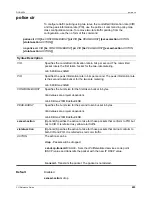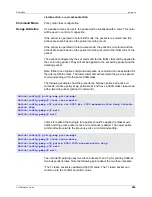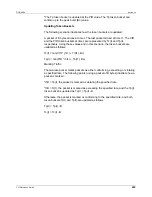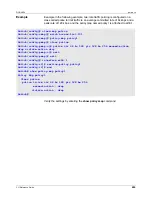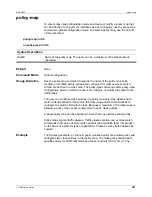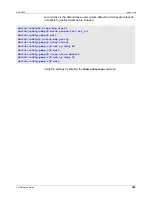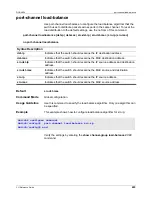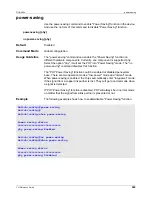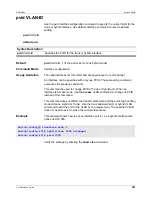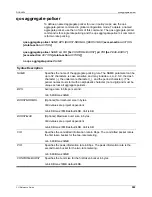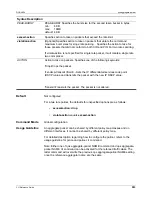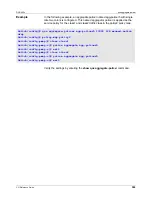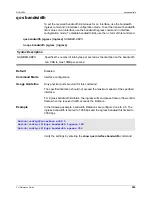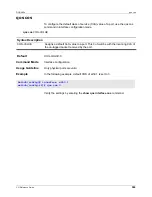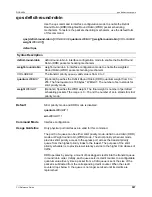
DGS-6604
m
police aggregate
CLI Reference Guide
492
police aggregate
To configure a named aggregate policer as the policy for a traffic class in a policy
map, use police aggregate command in the policy map class configuration mode.
To delete the name aggregate policer from class policy, use the no form of this
command.
police aggregate
NAME
no police aggregate
NAME
Default
None
Command Mode
Policy map class configuration
Usage Guideline
Use the qos aggregate-policer command in global configuration mode to create a
named aggregate policer, and then use the police aggregate command in the
policy-map class configuration mode to configure the named aggregate policer
as the policy for a traffic class. A named aggregate policer cannot be referred
from different policy map.
Example
This example shows how to configure a named aggregate policer parameters
and apply the policer to multiple classes in a policy map: An aggregate policer
with single rate policing named agg_policer1 is created. This policer is configured
as the policy for traffic class class1, class2, and class3.
Verify the settings by entering the
show policy-map
command.
Syntax Description
NAME
Specifies a previously defined aggregate policer name as the aggregate policer
for a traffic class. Up to 32 characters are allowed.
Switch(config)# qos aggregate-policer agg_policer1 64 128 exceed-action drop
Switch(config)# policy-map policy2
Switch(config-pmap)# class class1
Switch(config-pmap-c)# police aggregate agg_policer1
Switch(config-pmap-c)# exit
Switch(config-pmap)# class class2
Switch(config-pmap-c)# police aggregate agg_policer1
Switch(config-pmap-c)# exit
Switch(config-pmap)# class class3
Switch(config-pmap-c)# police aggregate agg_policer1
Switch(config-pmap-c)# exit

